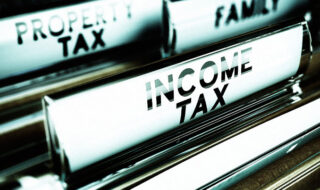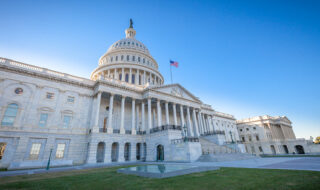April 10, 2025
NFIB VT reminds lawmakers to look out for small businesses
The Vermont House is working on a plan to overhaul the state’s property tax classification system, which could have a big impact on the property tax rates that small businesses pay.
If you are concerned about your small business’s property tax bill, this is the time to weigh in: Take Action: The time is NOW for real property tax relief.
Background
On April 8, the committee passed a proposal that doubles the number of property classes from two (homestead, nonhomestead) to four:
Homestead
Nonhomestead, Apartment
Nonhomestead, Nonresidential
Nonhomestead, Residential
The rates for each class have not yet been determined and the revised classification system would not take effect for years, even if agreed to by the Vermont Senate and signed by Governor Scott.
Read more about the House’s proposal – which passed on party lines – here.
Business groups, including NFIB VT, have raised concerns about shifting more of the property tax burden onto businesses.
Vermont Businesses Have a High Relative Property Tax Burden
In Vermont, both homeowners and small businesses deal with some of the highest property tax rates in the country – on top of individual and business income tax rates that are also among the highest.
According to a 50-state analysis of 2023 taxes paid (before the 14% hike last year) by the nonpartisan by the Lincoln Institute of Land Policy, effective tax rates were comparatively high for residential, commercial, and industrial properties in both rural and urban areas in Vermont. The report looked at the largest city and a representative rural city in each state:
Residential (Median Valued Home)
Urban (Burlington): 8th highest
Rural (Hartford): 14th highest
Commercial (Land and Building Value: $1 million)
Urban (Burlington): 17th highest
Rural (Hartford): 11th highest*
*At $100,000 in land and building value, this increases to 8th highest.
Industrial (Land and Building Value: $1 million, personal property = 50%)
Urban (Burlington): 19th highest
Rural (Hartford): 15th highest
NFIB VT understands that getting property taxes under control involves many complex and interrelated challenges: low housing production impacts population growth, worker supply, property taxes, etc. Slow growth in the working age population impacts small business growth, tax revenue, etc.
Making Property Tax Reform Work for Small Business
Lawmakers and Governor Scott are somewhat in agreement about moving away from the state’s existing complex, income-based property tax credit system toward a simpler market value exclusion.
NFIB VT believes any revamped property tax classification plan should also include a limited market value exclusion in the nonresidential nonhomestead class (e.g., commercial/industrial) that eases the property tax burden on smaller businesses.
As lawmakers consider the role that property tax classification plays in addressing these challenges, NFIB VT has asked them to keep two goals in mind:
Protect Small Businesses from Property Tax Shifts: More nuanced classification categories can be an opportunity to avoid increasing the burden on residential property owners and small commercial/industrial property. However, burden shifting can be an unintended consequence of reform – not just from residential onto small businesses, but also sometimes from higher valued C/I properties onto lower valued C/I properties.
Include A Small Business Market Value Exclusion: At least one state with a statewide property tax offers a market value exclusion aimed at helping small businesses. Minnesota exempts the first $150,000 in value of commercial and industrial properties from its statewide general levy. In an NFIB VT survey earlier this year, more than 80% of small business respondents supported this approach to relief for its simplicity.
It’s important to remember that, while the current property tax system offers broad income-based relief for individuals and families, the same is not true for most small businesses that are the lifeblood of Vermont’s economy.
Like many Vermonters, small businesses are feeling the squeeze right now and have been for years: the lingering effects of inflation, supply disruptions and price increases, and worker shortages have taken their toll. Lawmakers need to give small businesses a much-needed break.
Previous Plan
The House Ways & Means Committee’s final plan differs significantly from an earlier draft that would have created ten property classes:
Homestead
Nonhomestead, Residential A [RESA]
Nonhomestead, Residential B [RESB]
Nonhomestead, Apartment [APT]
Nonhomestead, Affordable Housing [AFF]
Nonhomestead, Commercial [COM]
Nonhomestead, Resort [RESO]
Nonhomestead, Industrial [IND]
Nonhomestead, Undeveloped [UND]
Nonhomestead, Public Use [PUB]
The initial, ten class draft was clearly aimed at raising property taxes on higher valued non-primary residences – among other potential shifts. The former plan defined Nonhomestead Residential A and Residential B are as properties that are habitable year-round and for which there is no homestead declaration or landlord certificate on file.
RESA is for properties with an equalized value of less than $1 million and RESB is for properties at or above that value.
According to some real estate analysts, Vermont has the second highest rate of non-primary residences in the country (behind only Maine). Some lawmakers have long eyed splitting off second homes into a new property tax class that’s taxed at a higher rate, similar to the higher real estate transaction tax rate on second homes enacted in 2024.
This is still in play under the plan that passed the House Ways & Means Committee, although the combined nonhomestead residential category is not so clearly aimed at higher value second homes.
NFIB is a member-driven organization advocating on behalf of small and independent businesses nationwide.
Related Articles














